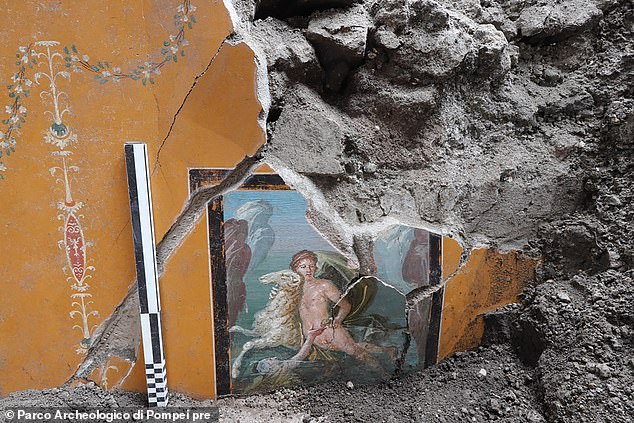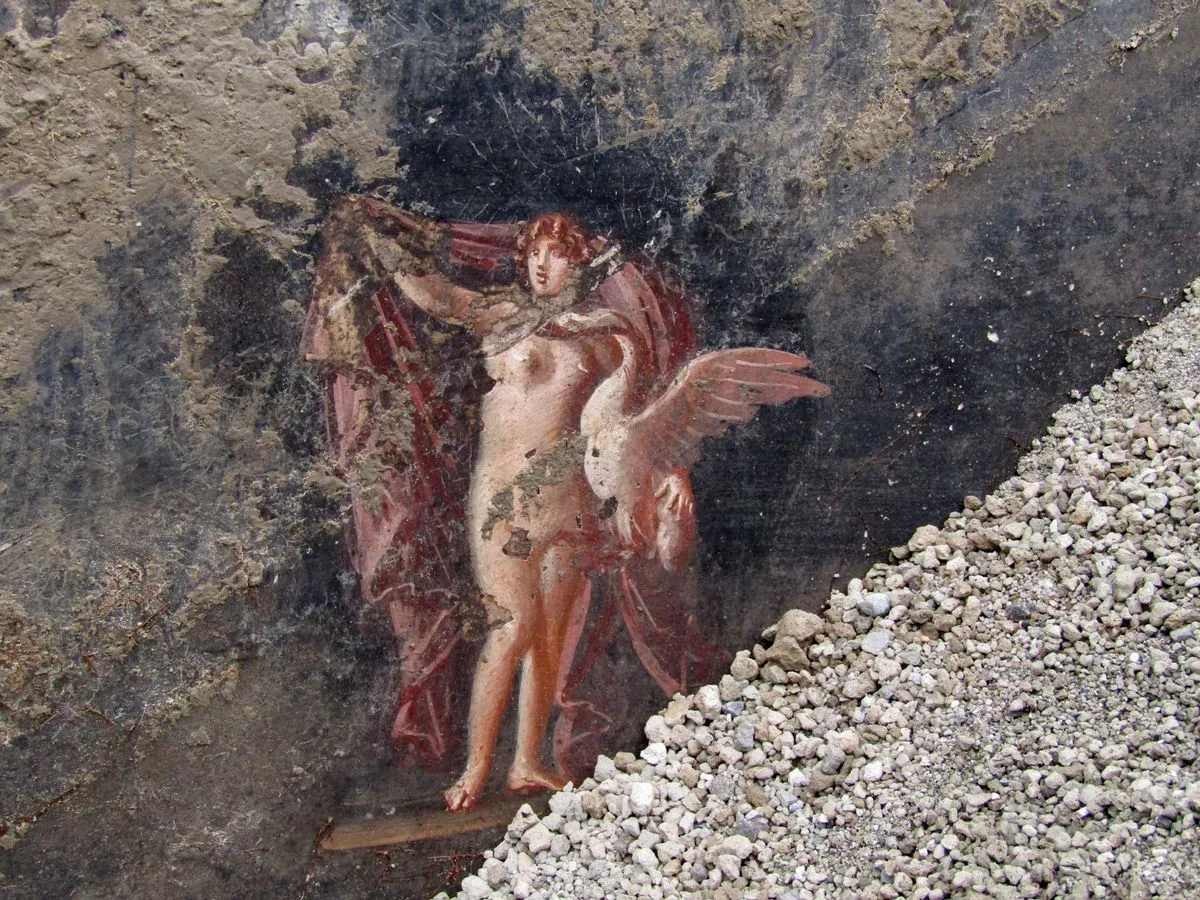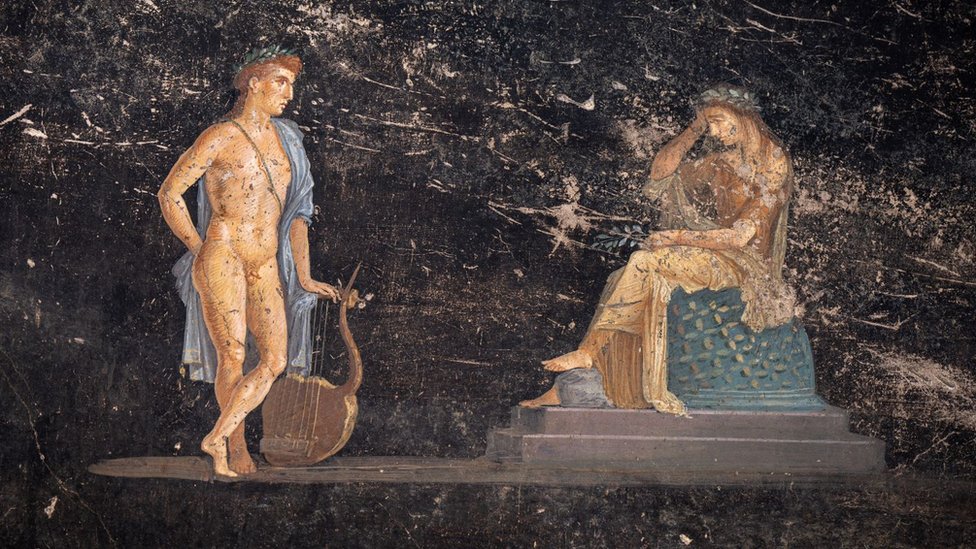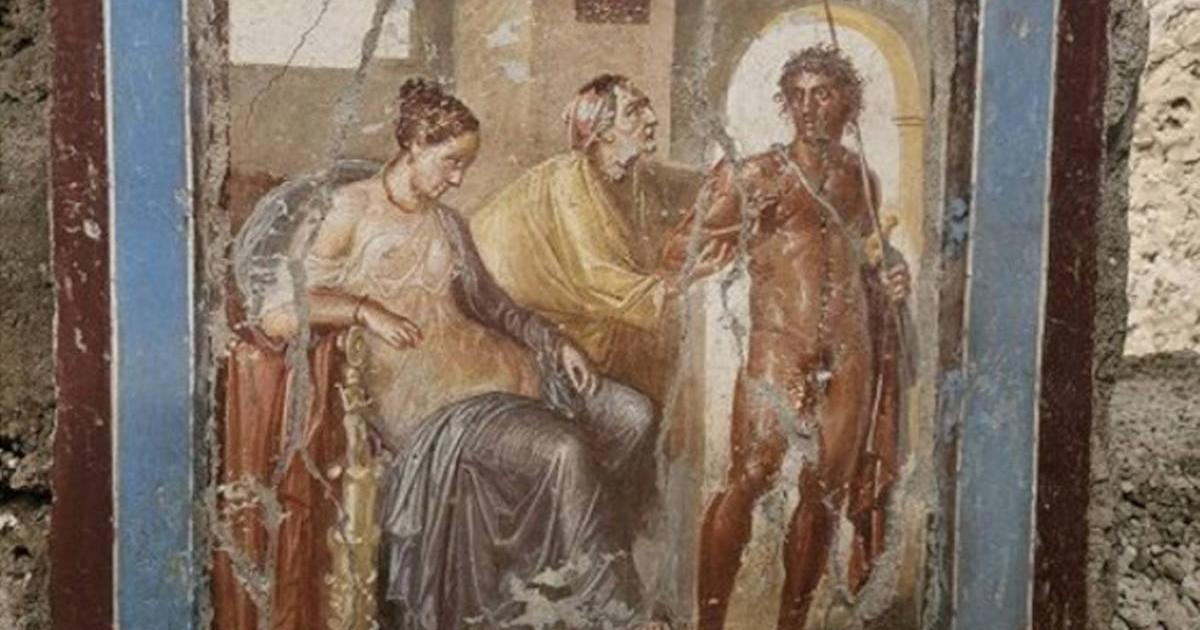Rediscovering Pompeii’s Lost Art
In 2018, a team of archaeologists in Pompeii made an extraordinary discovery—a fresco that had been buried and preserved under layers of volcanic ash for nearly 2,000 years following the eruption of Mount Vesuvius in 79 AD. Hidden away in a structure known as the House of the Enchanted Garden, this vivid artwork presents an intricately detailed scene filled with animals, plants, and a magnificent peacock in vibrant colors that have remained astonishingly fresh and intact. The preservation of this fresco not only reveals the exceptional craftsmanship of ancient Roman artists but also brings the lost world of Pompeii vividly to life.

A Glimpse into Pompeii’s Artistic Heritage
The fresco provides valuable insights into the artistic traditions of ancient Pompeii. During the Roman era, frescoes were a popular form of decoration in wealthy households, typically covering walls with scenes that reflected mythology, nature, daily life, or even symbolic images that conveyed the social status, wealth, and taste of the homeowner. The House of the Enchanted Garden’s fresco, with its lush imagery and precise details, reflects a cultural emphasis on beauty and nature while possibly signifying personal beliefs or aspirations.

The depiction of animals and plants, alongside the strikingly detailed peacock, suggests themes of harmony with nature. This intricate artistry illustrates not only the technical skill of Pompeii’s artisans but also the aesthetic values of its residents, who likely enjoyed their homes as personal sanctuaries decorated with symbols of beauty and life.
Art as a Reflection of Roman Society
Frescoes like those found in Pompeii were more than decorative elements; they were integral to the social and cultural fabric of Roman households. The themes, colors, and compositions chosen by homeowners often held deeper meanings and were meant to reflect the character and aspirations of the household. Scenes from mythology, for instance, might convey the cultural pride or religious devotion of the homeowner, while natural landscapes and animals could represent ideals of harmony, abundance, and prosperity.

The recently uncovered fresco from the House of the Enchanted Garden offers clues about the personal values of Pompeii’s residents, highlighting how art was interwoven with daily life and identity. In this fresco, the choice to depict a vibrant garden scene with various animals could represent a longing for natural beauty or suggest a symbolic paradise—reflecting both the spiritual and aesthetic ideals of the time.

Preservation Through Tragedy
Ironically, the cataclysmic eruption of Mount Vesuvius, which devastated Pompeii, also preserved many artifacts and artworks that otherwise might have been lost to time. The thick layers of volcanic ash created an air-tight seal that protected these frescoes from the elements, allowing their colors and details to survive remarkably well. This preservation offers us a uniquely intimate connection to the Roman world, capturing an entire society frozen in a single moment.

As archaeologists uncover more of these ancient treasures, each discovery builds upon our understanding of Pompeii, providing us with glimpses into a thriving civilization. The frescoes, in particular, reveal more than just artistic skill; they represent the values, beliefs, and daily life of Pompeii’s citizens, preserved in vivid detail.

Connecting with Ancient Pompeii
Today, as archaeologists continue their meticulous work, each fresco uncovered in Pompeii deepens our connection to this ancient world. The art that decorates these homes is a powerful reminder of the universal human desire to express beauty and identity. Every detail—from the delicately painted feathers of the peacock to the vibrant foliage—serves as a window into the lives, aspirations, and tastes of people who lived nearly two millennia ago.
These frescoes, preserved by nature’s most destructive forces, now bridge the gap between past and present. The vivid colors, intricate designs, and cultural themes give us more than historical insight; they offer a personal connection to the people of Pompeii, reminding us of the endurance of art and the timeless beauty of human creativity.
